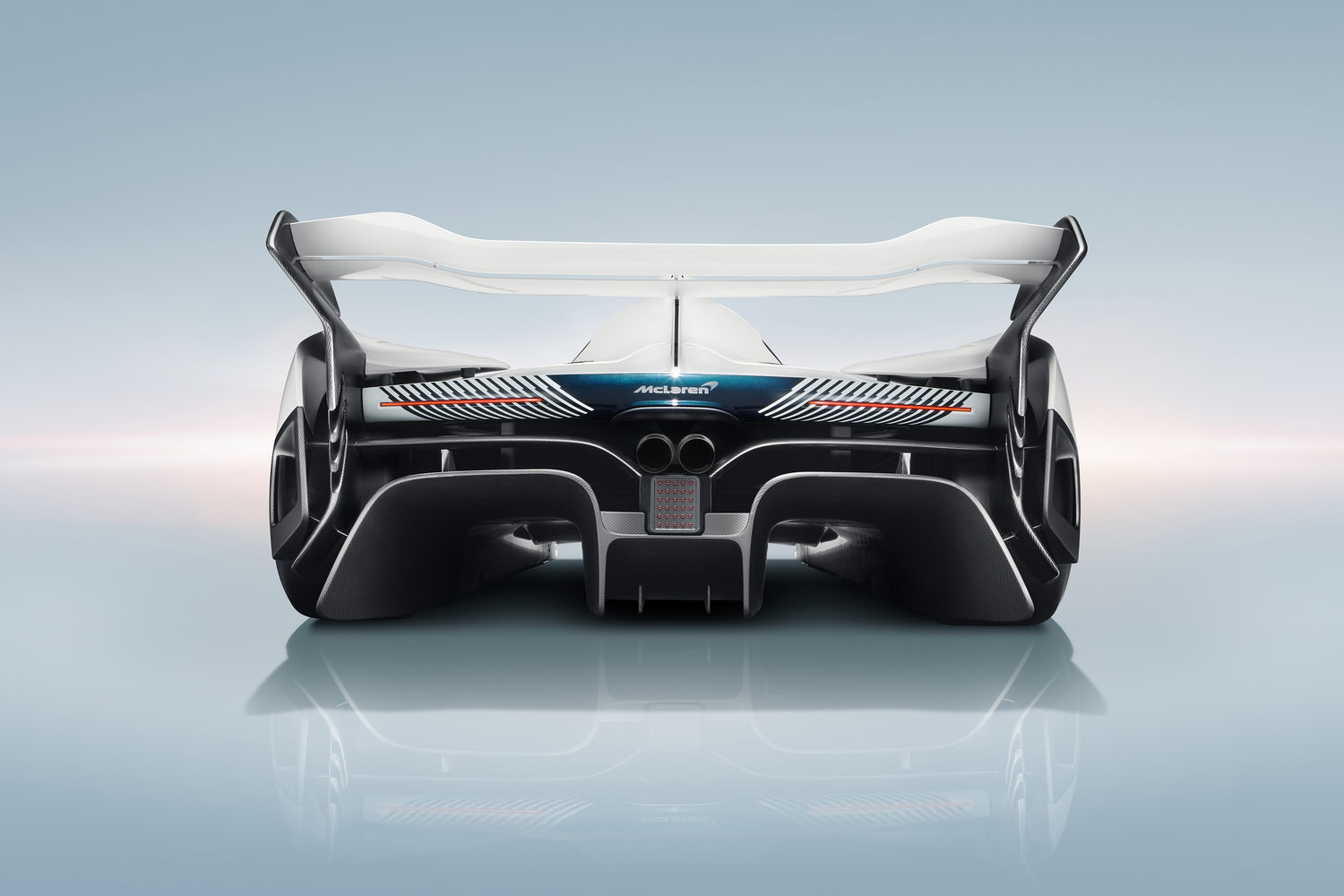McLaren has revealed the Solus GT, an ultra-rare hypercar designed solely for track use.
Unveiled today at Monterey Car Week in California, if the Solus GT looks familiar to any gamers out there, that's because the design was first previewed back in 2017 as the McLaren Ultimate Vision concept in the Gran Turismo Sport video game.
Virtual the Solus GT is not and represents, McLaren says, an expression of all the knowledge it has acquired over the years through its racing and supercars in making things go extremely fast.
V10 screamer
Powering the Solus is a mid-mounted, naturally-aspirated 5.2-litre V10 engine developing "in excess of" 840hp and 650Nm of torque. Revving to an ear-splitting 10,000rpm, the ten-cylinder unit should be able to propel the Solus from 0-100km/h in 2.5 seconds, though as the car is still under development, the figures have yet to be finalised.
The gearbox is a bespoke seven-speed sequential unit and features straight-cut gearing, a design usually only found on racing cars and almost never seen on road cars because the result is simply too loud and harsh.
Absent from the engine's design are any belts or chains as the camshafts and ancillaries are instead driven by gears.
Lightweight design
The engine and gearbox help keep the Solus' overall kerb weight to less than a ton (and thus it has a highly impressive power-to-weight ratio). Both form a stressed part of the chassis, a design common on racing cars, but rarely seen on road cars, negating the need for any additional bracing or strengthening behind the carbon-fibre monocoque tub in which the driver sits.
That tub, and the carbon-fibre construction, also plays a big part in the Solus' lightness, as does the carbon-fibre bodywork.
1,200kg of downforce
The bodywork - including the shape, the ducting and the aerodynamic elements - is another big reason for the Solus being so potentially capable on the track.
The wheels, for example, are shrouded in aerodynamic pods. The radiators for cooling the engine sit in side pods. A large front splitter feeds air into ground-effect tunnels before it exits the car via a full diffuser at the back. McLaren says that the downforce pressing the Solus closer to the tarmac is, at around 1,200kg, heavier than the mass of the car itself.
Jet fighter cockpit
One of the coolest parts of the Solus is unquestionably the canopy that slides forward to permit ingress to the cockpit like in a fighter jet. Space isn't abundant due to the single-seat design, but the driver gets everything they need for the track including air conditioning, bracing around the canopy similar to the halo design seen on F1 cars and an escape hatch in the canopy too should the sliding mechanism become obstructed.
The seat will be specially moulded and fitted to the buyer with the pedal box also capable of being moved to accommodate a taller or shorter driver.
In the absence of a rear-view mirror, a wide-angle camera mounted on the rollover hoop relays footage from behind the car into the cockpit in order for the driver to see what's behind them or to avoid pulling out into the path of another car during a pit-lane exit.
Let's go racing
Such is the nature of very high-end collector cars that most of them rarely see the outside of their garage, let alone a race circuit.
McLaren though, is aiming to encourage owners to take their non-road-legal Solus to the track with the inclusion not just of the specially-made seat, but also a fully FIA-homologated race suit, helmet, HANS head restraint designed for each owner and radio-enabled ear inserts. A full driver-development coaching programme will also be available, to help drivers get the best of the Solus' performance.
The company is also planning on running Solus track days, and all cars will be delivered with a package including a comprehensive set of tools, vehicle jacks, stands, radio sets and a coolant pre-heater to better facilitate that.
All sold out
Still undergoing development testing, first deliveries of the sole batch of 25 McLaren Solus GTs will begin in 2023. All are already sold.








